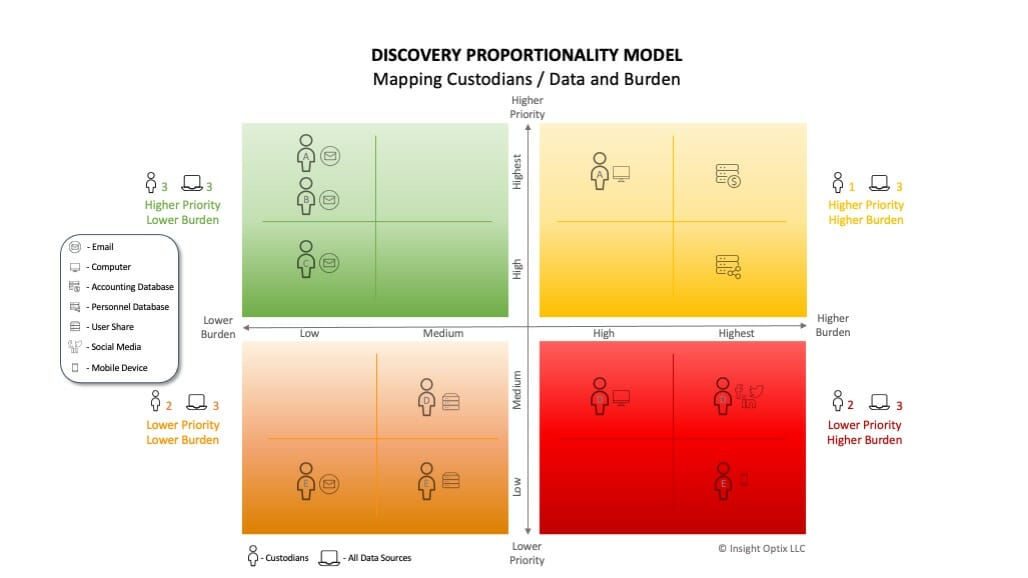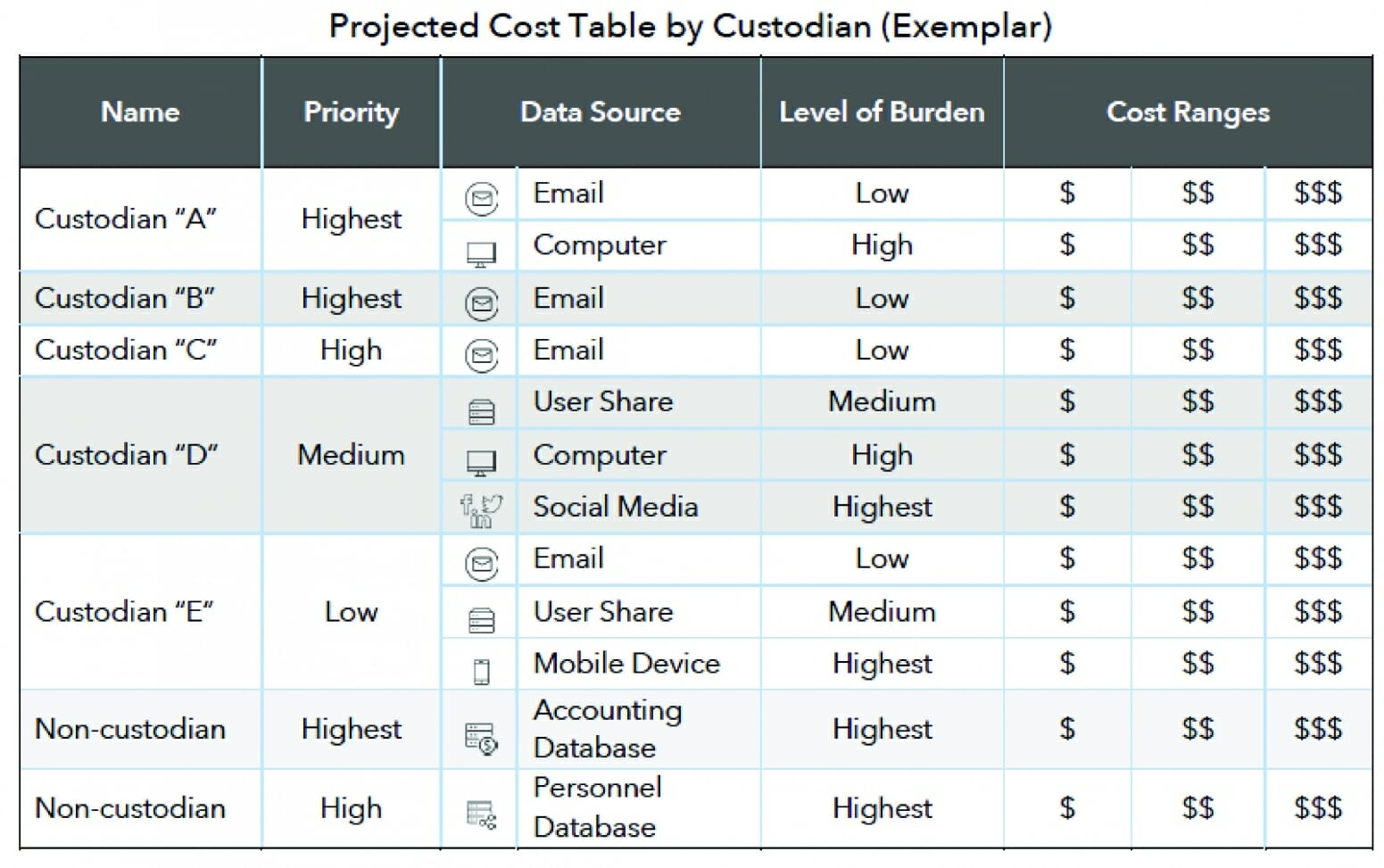For more than a year, a group of 50+ judges, eDiscovery technologists and legal experts have been collaborating on The GW Proportionality Initiative. This exciting initiative to develop a rigorous new Framework for proportionality analysis aims to improve the integrity of the discovery process.
The model’s structured methodology creates a new analytical framework which is designed to enhance proportionality assessments, facilitate discovery negotiations, and better inform judicial resolution of discovery disputes. It brings much-needed guidance and fairness to the analysis of discovery’s costs and burdens based on a sensible methodology and reference benchmarks.
How the new Proportionality Framework would transform the practice of law
Historically, the arguments attorneys have made on cost proportionality have often been inconsistent and superficial. It’s not unusual for one side to claim that it’s going to cost them $10 million in discovery expenses while the opposing side argues that it should cost $50,000. Typically, the judge doesn’t have any additional information and will often split the difference without any metrics or parameters to inform that decision.
The GW Proportionality model provides a step-by-step framework to help parties negotiate what is reasonable or not reasonable and what is proportional to the needs of the case. While many attorneys do this individually in varying degrees, the Proportionality Framework takes one big step forward by formalizing the process. This levels the playing field by creating a standard vocabulary and providing reliable cost metrics.
In a nutshell, the Proportionality Framework provides attorneys a method for:
- Prioritizing custodians from most important to least important
- Ranking the relative burden of retrieving information from the various data sources
- Plotting the matter on the heat map, relating custodian importance and collection burden
- Using the cost calculator to show how the cost estimates were determined, based on each data source’s projected data volumes and estimated per GB costs
Balancing act: scoping out the project
The model classifies custodians and their respective data sources into four broad categories by priority and discovery burden. They identify seven possible data sources: email, computer, accounting database, personnel database, user share, social media, mobile device.
On the top left-corner, priority relevance is high, effort is low. Custodians with highest priority at lowest discovery burden are quickly identified and mapped in that corner. By contrast, custodians plotted in the lower right-hand corner are least important and most expensive. When this is in front of a judge, in front of all the lawyers, it’s clear who should be targeted first: the least expensive and the most important. With that information, logically, you can start going down the line, sampling and figuring out what is most relevant to your case.
Defining the cost and burden of eDiscovery
The new framework establishes cost benchmarks based on real-world experience and published metrics. Using a table of projected discovery costs by custodian and data source, a model is developed to help refine proportionality assessments.
William Wallace Belt, Jr., Managing Director at CDS, has been working on the cost calculator and cost database table that details per gigabyte costs for each data source, starting with collection and going all the way through pre-processing, processing, and including some allowances for analytics.
“Essentially, you start with your custodians and your gigabyte volume,” said Bill. “The calculator lays out the process and associates it with cost numbers so that you can walk through a discovery project and map out estimates as to the cost burden of a new discovery project based on real facts. This will help the court make informed decisions based on established numbers.”
Among the assumptions, the model estimates the hourly cost of a privilege review, a per-GB charge for pre-processing, the cost of processing on an in-and-out model, and the cost of collections on an hourly model or per data source model. For email, the benchmark total cost is roughly $7,000 per GB.
Who benefits from a standardized model for proportionality assessment?
The defense bar is likely to embrace the new methodology. Plaintiffs may say, “Well, this is a lot of over assumption. You’re raising the costs and they’re unreasonable. We don’t think it’s going to cost that much.” Some may come back later when their wish is granted and say, “Well, somebody backed up a mountain of data on me, and I think it’s unfair.” In fact, a standardized framework can benefit inexperienced plaintiff lawyers, since the numbers they present to the bench are sometimes out of step with current trends.
Some plaintiffs are concerned that this approach overemphasizes the cost-benefit factor versus the interests at stake. For example, in employment discrimination cases, the plaintiff may argue that even though they’re only arguing for a $10,000 award, they want to spend $100,000 discovery because the case involves a Constitutional right. The GW Framework doesn’t include provisions for assessing a case’s judicial significance, a more subjective exercise.
The Initiative believes a shared understanding can only help the judge and attorneys on both sides. Ultimately, the goal is to present judges with a clear picture of what the approximate costs are so they can make better decisions.
Flexibility exists, but expect to justify your decisions
Obviously, in individual circumstances, things will vary. Companies have different ways of handling data, some will have theirs in-house which may cut out some steps, but regardless, the calculator will provide a reference point. As new information is gained through interactions and negotiations with the opposing party, the model can be adjusted.
The framework itself is not deciding what is proportional. It simply provides stakeholders with granular information to support or challenge an argument.
To standardize the exchange of information, the Initiative is developing a template to submit to courts and judges that includes the heat map and the worksheet. If your suggested per-GB cost is outside of the norm, the lawyer will have to explain to the court why it varies. There may be good reasons to ask for 5X what the calculator suggests, and the other side can challenge the request, but at least it gives the judge and the opposing party something to chew on.
When everyone is working from the same set of standards, we’re all rowing in the direction of an expedited and fair resolution.





